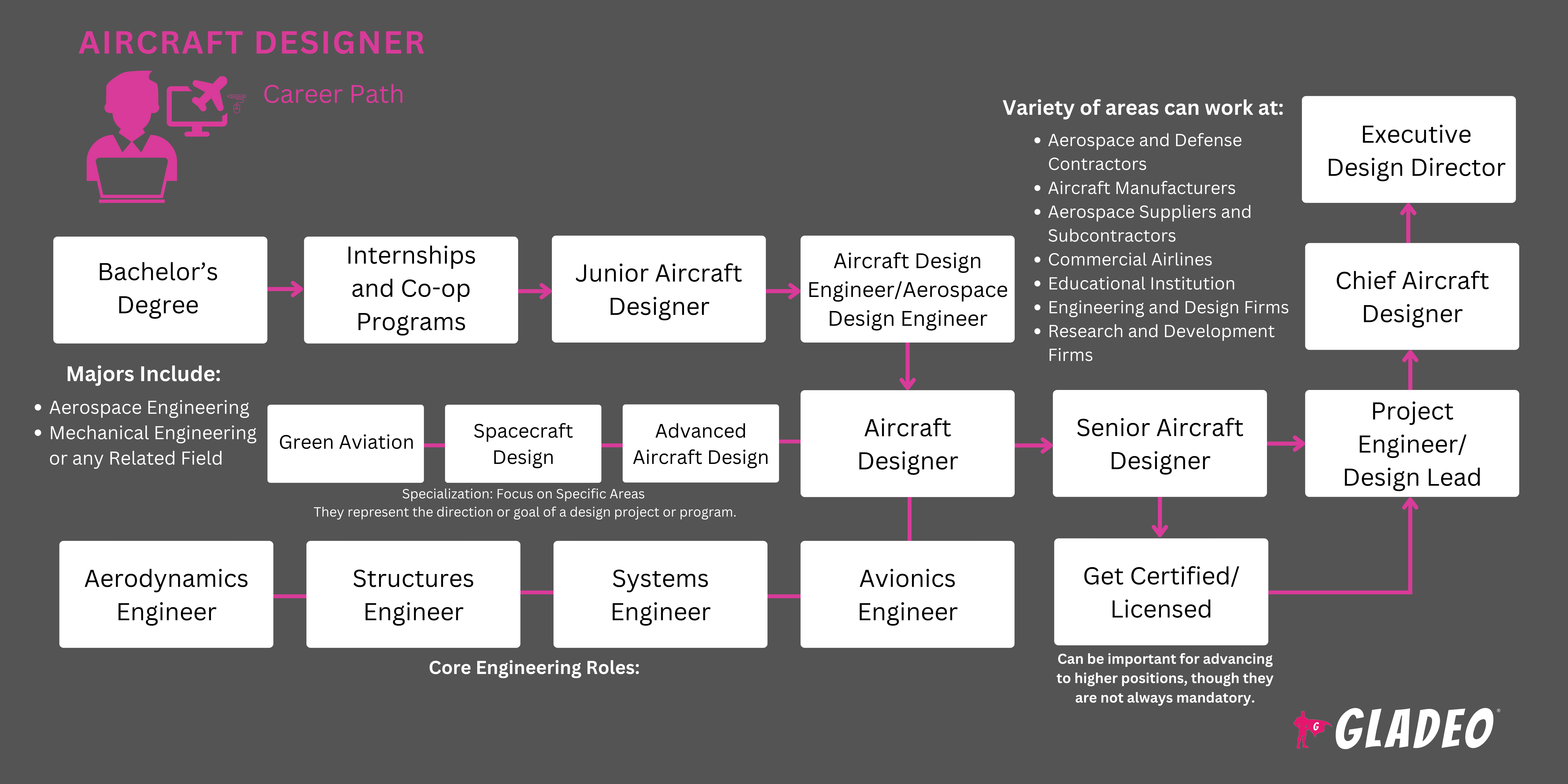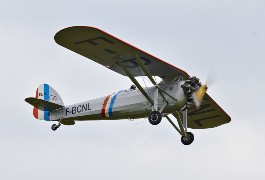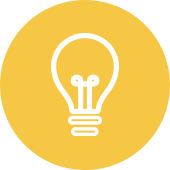스포트라이트
항공 우주 엔지니어, 항공기 엔지니어, 항공기 시스템 설계자, 항공 우주 설계 엔지니어, 항공 엔지니어, 항공기 설계 및 개발 엔지니어
민간 항공기와 군용 항공기를 합치면 미국에만 약 22만 대의 항공기가 있으며, 이는 전 세계 전체 항공기 수의 극히 일부에 불과합니다! 매년 이러한 항공기 설계 중 상당수는 공기역학, 재료 과학, 구조 분석 및 추진 분야의 최신 정보를 사용하여 개선하기 위해 검토 및 업데이트됩니다. 이 복잡한 작업은 전문 항공기 디자이너가 엔지니어, 제조업체 및 정부 기관과 협력하여 수행합니다.
상업용 비행기와 군용 제트기부터 헬리콥터와 무인 항공기에 이르기까지 항공기 설계자는 연료 효율성 증대, 성능 향상, 소음 감소, 구조적 무결성 및 안전성 개선 등의 과제를 해결해야 합니다. 물론 설계가 실현 가능하고 규정을 준수하는지 확인해야 합니다.
초기 설계자가 승인을 받으면 항공기 설계자는 모델링 및 시뮬레이션을 위한 정교한 소프트웨어 도구를 사용하여 실제 프로토타입을 제작하기 전에 가상의 조건에서 설계를 테스트합니다. 새로운 "클린 시트" 디자인이 컨셉 단계부터 실제 생산 및 실제 사용까지 개발되는 데는 몇 년이 걸릴 수 있습니다.
- 혁신적인 고성능 항공기 설계 작업
- 항공 기술 발전에 기여하는 기업
- 다양한 프로젝트에 참여할 수 있는 기회
- 여러 분야의 전문가로 구성된 팀과의 협업
근무 일정
- 항공기 디자이너는 일반적으로 주당 40시간을 초과하는 풀타임으로 근무하는 경우가 많습니다. 프로젝트 마감일을 맞추거나 설계 문제를 해결하기 위해 추가 근무를 해야 할 수도 있습니다.
일반적인 의무
- 기존 설계 검토에 참여하여 기술 전문 지식 제공
- 이해관계자와 만나 신규 또는 수정된 디자인 프로젝트의 목표, 예산, 기간을 검토하세요.
- 컴퓨터 지원 제도 소프트웨어를 사용하여 항공기 설계 개발 및 개선
- 상세한 기술 도면 및 문서 작성
- 제조 팀과 협력하여 실현 가능성, 효율성 및 일정 준수를 보장합니다.
- 이해관계자에게 디자인 컨셉을 제시하세요. 피드백을 통합하고 항공 안전 규정 및 표준 준수 보장
- 시뮬레이션, 응력 테스트 및 풍동 테스트를 수행하여 공기역학적 특성을 분석하고 설계 성능을 검증하며 무게, 내구성 및 비용 효율성에 대한 소재를 평가합니다.
- 디자인 반복을 관리하고 문서 버전 관리를 유지하세요.
- 엔지니어와 협업하여 시스템, 구성 요소, 항공 전자 공학 및 추진 시스템과 같은 고급 기술을 통합합니다.
- 환경 영향 평가 및 친환경 설계 솔루션 개발
- 기존 설계에 대한 장애 분석 및 개선 작업 수행
추가 책임
- 교육 과정과 자격증을 통해 지속적인 전문성 개발 참여
- 업계 컨퍼런스 및 워크샵에 참석하여 트렌드를 파악하세요.
- 대학 및 연구 기관과 협업
- 연구 결과를 발표하고 업계 저널에 기고하세요.
- 주니어 디자이너를 멘토링하세요. 대규모 프로젝트에서 교차 기능 팀을 이끌기
- 제조 및 테스트 단계에서 기술 지원 제공
- 회사 디자인 표준 및 모범 사례 개발에 기여하기
- 기술 정보로 마케팅 및 영업팀 지원
소프트 스킬
- 세부 사항에주의
- 통신
- 창조성
- 비판적 사고
- 의사 결정
- 혁신
- 끈기
- 설득
- 문제 해결
- 팀워크
- 시간 관리
기술 능력
- 2D 그래픽 디자인 도구: Adobe 일러스트레이터, 포토샵, 인디자인
- 프로젝트 관리 소프트웨어: 마이크로소프트 프로젝트, 트렐로 또는 아사나
- 공동 작업 도구: Slack 또는 Microsoft Teams
- 컴퓨터 지원 제도 및 3D 모델링: AutoCAD, CATIA, SolidWorks, Rhino 및 Siemens NX
- 컴퓨터 지원 제조
- 컴퓨터 수치 제어(CNC) 가공
- 전기 시스템 및 통합 알티움 디자이너, 이글, 멘토 그래픽스
- 인체공학 및 인적 요소 공학
- 인간-기계 인터페이스 디자인: Sketch, Adobe XD 또는 Axure RP
- 재료에 대한 지식: 금속, 복합재, 플라스틱 및 제조 공정에서 사용되는 재료에 대한 지식
- 제조 제약 조건 및 린 제조 원칙
- 사실적인 렌더링 및 애니메이션: KeyShot, V-Ray 또는 Lumion
- 제품 라이프사이클 관리: 지멘스 팀센터 또는 PTC Windchill
- 항공 규제 표준 및 규정 준수
- 시뮬레이션 소프트웨어: 구조 무결성, 공기역학 및 충돌 안전성 테스트를 위한 ANSYS, Simulink 및 MSC Nastran
- 사운드 디자인 및 음향: EASE 또는 SoundPLAN
- 서피스 모델링: ICEM 서피스 또는 별칭 서피스
- 지속 가능성 및 친환경 디자인
- 테크니컬 드로잉 및 모델링 앨리어스, 블렌더 및 드래프트사이트
- 차량 동역학 및 엔지니어링: 공기역학, 구조 분석, 추진 시스템, 항공 전자 공학
- 가상 및 증강 현실 툴 Unity, Unreal Engine 또는 Autodesk VRED
- 항공우주 제조업체 및 공급업체
- 상업용 항공사
- 방위 계약업체
- 교육 기관
- 엔지니어링 및 디자인 회사
- 정부 기관
- 민간 항공 우주 기업
- 연구 및 개발 회사
항공기 설계자는 역동적인 업무 환경에서 최첨단 프로젝트를 진행합니다. 엄격한 안전 및 성능 표준을 준수하는 매우 정확하고 신뢰할 수 있는 설계를 제작하기 위해 팀과 협업해야 합니다. 이 직무는 진화하는 항공 기술과 규정을 따라잡기 위해 세부 사항에 대한 세심한 주의와 지속적인 전문성 개발이 요구됩니다.
디자이너의 업무는 때때로 장시간 노동이 필요하고, 엄격한 기준을 충족해야 한다는 압박감으로 인해 일부 직원들은 힘들어합니다. 하지만 많은 디자이너는 기술적인 도전과 창의적인 기회가 조화를 이루는 것을 좋아합니다. 특히 수년간의 노력 끝에 디자인이 현실화되는 것을 볼 때 큰 만족감을 느낍니다.
항공기 설계의 주요 트렌드는 경량 복합 소재를 사용하여 무게를 줄이고 연료 효율을 개선하는 것입니다. 또 다른 트렌드는 기존 엔진 대신 더 조용하고 깨끗하며 효율적인 전기 및 하이브리드 추진 시스템을 개발하는 것입니다. 첨단 항공 전자공학 및 자동화 기술도 안전성을 높이고 조종사의 업무량을 줄이면서 설계 산업을 변화시키고 있습니다. 설계자는 지속 가능성을 높이기 위해 설계 과정에서 이러한 기술 및 기타 발전을 따라잡아야 합니다.
항공기 디자이너는 모형 비행기를 만들어 날리고, 디자인과 역학을 실험하고, 과학 박람회나 로봇 클럽과 같은 STEM 관련 활동에 참여하는 것을 즐겼습니다.
- 항공기 설계자는 일반적으로 항공 우주 공학, 기계 공학 또는 관련 분야의 학사(또는 경우에 따라 석사) 학위를 취득합니다.
- 기계 공학을 전공하고 항공 우주 공학을 부전공하는 학생도 있습니다.
- 학사/석사 복수 과정을 이수하면 시간과 비용을 절약하는 데 도움이 될 수 있습니다.
- 일부 디자이너는 엔지니어가 아니라는 점에 유의하세요. 이들은 산업 디자인 출신이지만 기술적으로 실현 가능한 디자인을 만들기 위해 엔지니어와 긴밀히 협력합니다.
- 공학 학위가 없는 경우, 전문 과정 및 자격증을 통해 충분한 기술 지식과 함께 인턴십, 협동 프로그램 또는 실습 프로젝트를 통해 실질적인 업계 경험을 쌓을 수 있습니다.
- Flying Magazine에서 언급한 것처럼 "대부분의 직책은 항공학이나 우주항공학 외에도 기계, 전기, 구조, 재료, 심지어 토목공학 등 광범위한 공학 또는 과학 분야의 학사 학위가 필요합니다. 다른 직종에서는 시스템 안전, 인적 요소, 항공-차량 통합 또는 미적 디자인에 대한 교육이 필요할 수도 있습니다. 이 분야에 진출하는 대부분의 사람들은 CAD/CAM 및 CNC 교육과 역량을 갖추고 있을 것으로 예상됩니다."
- 항공기 디자이너 지망생을 위한 관련 교육 과정에는 다음이 포함됩니다:
- 항공우주 구조물
- 공기역학
- 추진 시스템
- 항공기 성능 및 디자인
- 비행 역학
- 항공 전자 시스템
- 항공 우주를 위한 재료 과학
- 전산 유체 역학(CFD)
- 유한 요소 분석(FEA)
- 항공기 시스템 및 제어
- 엔지니어링 설계 원칙
- 항공 안전 표준 및 규정
- 지속 가능한 디자인 및 친환경 실천
- 테크니컬 드로잉 및 3D 모델링
- 디자인에서의 가상 및 증강 현실
- 인턴십 또는 코업 프로그램은 귀중한 실무 경험과 실무 학습 기회를 제공합니다.
- 자격 증명을 강화할 수 있는 선택적 인증에는 다음이 포함됩니다:
- 적층 제조 인증
- 항공기 인증 전문가
- AS9100 인증(항공우주 품질 경영 시스템 인증)
- 공인 항공 우주 기술자
- 공인 CAD 전문가
- 공인 CATIA 어소시에이트
- 공인 복합재 기술자
- 공인 전문 엔지니어
- 공인 솔리드웍스 전문가
- 공인 시스템 엔지니어링 전문가
- 프로젝트 관리 전문가
- 식스 시그마 인증
- 지속 가능한 디자인 인증
- 진화하는 기술과 규정을 최신 상태로 유지하는 것은 필수적이며 전문 개발 워크샵이나 과정을 통해 이를 수행할 수 있습니다.
- 미국 항공우주학회 또는 항공우주기술자협회와 같은 전문 단체에 가입하면 네트워킹 기회와 업계 이벤트에 참여할 수 있습니다.
- 필요에 맞는 프로그램 형식(캠퍼스 내, 온라인 또는 하이브리드)을 결정합니다.
- 항공우주 공학, 기계 공학 또는 프로그램, 연구실, 연구 기회, 인턴십, 업계 파트너와의 협력 프로그램 등이 잘 갖춰진 ABET 인증 프로그램을 제공하는 학교를 찾아보세요.
- 사용 가능한 재정 지원 및 장학금 기회와 수업료를 비교해 보세요.
- 교수진의 자격과 졸업생의 업적을 평가합니다.
- 취업률과 같은 졸업 후 결과를 고려하세요.
- 미적분, 미분 방정식, 선형 대수, 통계 및 확률, 수리 방법, 공학 수학, 복잡 변수, 물리학 및 컴퓨터 과학과 같은 예술, 디자인 및 STEM 과목에 집중하세요.
- 항공기 설계의 역사, 문제점 및 해결책을 공부하세요. 가장 혁신적인 설계와 그 이유를 살펴보세요.
- 설계하려는 항공기의 유형이나 항공기의 특정 구성 요소에만 집중하고 싶은 경우 생각해 보세요.
- 엔지니어링 클럽에 가입하고 과학 박람회 및 경진대회에 참가하세요.
- 디자인 스튜디오나 항공기 제조 공장에서 인턴십, 아르바이트, 협력 교육 프로그램, 멘토링 기회 또는 견습직을 구하세요.
- 이력서 및 대학 지원서를 위해 업무와 학업 성취도를 추적하고 프로젝트 및 연구 경험의 포트폴리오를 구축하세요.
- 항공기 설계 및 기타 저널의 기사를 읽거나 정보 동영상을 시청하여 업계 동향과 발전에 대한 최신 정보를 얻으세요.
- 현직 항공기 디자이너에게 연락하여 정보 제공 인터뷰를 요청하세요. 하루 동안 직장에서 섀도잉을 할 수 있는지 알아보세요.
- 온라인 항공기 설계 관련 토론 그룹 및 미국 항공우주학회와 같은 전문 기관에 가입하세요 .
- 채용 공고를 검토하고 직무 설명을 읽어 고용주가 현재 어떤 자격 요건과 전문성을 원하는지 확인하세요.
- 성공적인 항공기 디자이너가 되기 위해 조종사가 반드시 필요한 것은 아니지만, 개인 조종사 면허를 보유하고 있다면 항공 산업에 대한 헌신을 보여줄 수 있습니다.

- 이러한 일자리는 네트워킹을 통해 찾는 경우가 많으므로 항공 관련 이벤트에 참석하여 인맥을 넓혀보세요.
- 전문적인 LinkedIn 프로필과 웹사이트를 만들어 작업을 소개하세요.
- 잠재적 고용주를 조사하고 해당 채용 페이지를 방문하여 채용 정보를 확인하세요.
- 미국 내 항공기 설계자를 가장 많이 고용하는 기업으로는 보잉, 록히드 마틴, 노스롭 그루먼, 레이시온 테크놀로지스, 제너럴 다이내믹스, NASA, 걸프스트림 에어로스페이스, 텍스트론 항공, 블루 오리진, 스페이스X 등이 있습니다.
- 일자리가 있는 곳과 가까운 곳으로 이사해야 할 수도 있다는 점에 유의하세요!
- 인내심을 가지세요. 인턴십, 수습직, 협동 프로그램, 신입직에 지원하기
- 교육 프로그램 관리자에게 현지 고용주 또는 채용 담당자와의 관계가 있는지 문의하세요.
- 인디드, 링크드인, 글래스도어 등의 포털에서 구인 정보를 살펴보세요.
- 항공기 디자이너 이력서 템플릿을 사용하여 서식과 문구에 대한 아이디어를 얻으세요.
- 다음과 같은 관련 이력서 키워드를 포함하세요:
- 3D 모델링
- 고급 합성물
- 공기역학
- 항공우주 공학
- 항공기 시스템 통합
- 컴퓨터 지원 설계
- CATIA
- 비행 역학
- 재료 과학
- 기계 공학
- 제품 수명 주기 관리
- 추진 시스템
- 프로토타이핑
- 규정 준수
- SolidWorks
- 스트레스 분석
- 열 분석
- 풍동 테스트
- 프로젝트와 기여도를 보여주는 디지털 포트폴리오를 만드세요. 자신의 역할, 사용한 기술, 업무의 영향력을 자세히 설명하세요.
- 관련 용어와 트렌드를 숙지하여 면접에 대비하세요.
- 전 상사 및 대학 교수에게 추천서 또는 추천서를 요청하세요.
- 이력서 지원, 모의 면접, 취업 박람회를 위해 대학교의 커리어 센터를 활용하세요.
- "디자인이 미적으로 만족스럽고 기능적인지 확인하기 위해 어떤 기술을 사용하나요?" 또는 "이해 관계자의 피드백을 디자인 프로세스에 어떻게 통합하나요?" 등의 잠재적인 면접 질문을 검토하세요.
- 업계에 대한 최신 정보를 파악하세요. 면접 시 트렌드와 기술에 대해 토론할 준비를 하세요.
- 면접을 위한 전문성 있는 복장
- 상사와 승진 기회에 대해 논의하세요.
- 도전적인 프로젝트에 자원하여 자신의 기술과 적응력을 보여주세요.
- 경력 및 고용주에게 도움이 되는 추가 교육 및 훈련을 적극적으로 찾아보세요.
- 최신 소프트웨어, 도구 및 방법론으로 최신 정보 유지
- 항공기 인증 전문가, AS9100 인증, 공인 항공 우주 기술자, 공인 CAD 전문가 또는 공인 전문 엔지니어와 같은 전문 자격증을 고려하세요.
- 대학원 학위를 취득하여 전문성을 심화하세요.
- 항공기 디자인 내 다양한 분야를 탐색하여 전문성을 넓혀 보세요. 예를 들어, 평소 비행기만 디자인했다면 헬리콥터나 드론을 디자인해 보세요.
- 다른 나라를 여행하며 그 나라의 디자인 프로그램과 스타일을 배워보세요. 업계 최고의 디자이너의 작품 연구하기
- 동료, 관리자 및 이해관계자와의 강력한 관계 구축
- 주니어 동료나 인턴을 멘토링하여 리더십 기술을 개발하세요
경력 발전을 위해 직장을 옮기는 것을 고려하세요. 워싱턴주 시애틀, 캔자스주 위치타, 텍사스주 포트워스, 조지아주 사바나, 앨라배마주 모바일, 캘리포니아주 롱비치 등 항공기 제조 직종으로 유명한 도시로 이사하세요. - 전문가 협회에 적극적으로 참여하여 네트워크와 평판을 쌓으세요. 컨퍼런스에 참석하고, 위원회에 자원하여 봉사하고, 업계 저널이나 출판물에 학술 논문을 기고하세요.
웹사이트
- 미국 항공우주국
- 항공우주 산업 협회
- 항공우주 제조 및 설계
- 항공 우주 테스트 국제
- 에어버스 기술 간행물
- 항공기 소유자 및 조종사 협회
- 미국 항공 우주 연구소
- 미국 기계 공학회
- 무인 차량 시스템 국제 협회
- 항공 주간 및 우주 기술
- 보잉의 분기별 혁신
- 캐나다 항공 우주 연구소
- 방위고등연구계획국
- 국방 뉴스
- 유럽 우주국
- 실험용 항공기 협회
- 연방 항공국
- 국제선 항공편
- 항공 우주 연구소
- 전기전자기술자협회 항공우주 및 전자 시스템 학회
- 기계 공학 연구소
- 국제 항공 과학 협의회
- 국제 시스템 엔지니어링 협의회
- 국제 항공우주 공학 저널
- 항공우주 공학 저널
- 항공우주 정보 시스템 저널
- 항공기 저널
- 추진 및 전력 저널
- 우주선 및 로켓 저널
- 미국 항공우주국
- 왕립 항공 학회
- 항공우주 엔지니어 협회
- 항공 우주 공사
- 수직 비행 사회
책
- 엔지니어를 위한 공기역학: 존 버틴과 러셀 커밍스의 글
- 항공기 설계: 항공기 설계: 개념적 접근, Daniel P. Raymer 저
- 비행 입문, 메리 보우든과 존 앤더슨 저
항공기 설계는 보람 있고 잠재적으로 수익성이 높은 직업 옵션이지만, 진입하기 어려운 분야일 수 있습니다. 비슷한 기술을 필요로 하는 직업이 궁금하다면 아래 목록을 참고하세요!
- 고급 운전자 지원 시스템 엔지니어
- 항공우주 엔지니어
- 자동차 공기역학 엔지니어
- 자동차 인체공학 전문가
- 자동차 안전 시스템 설계자
- CAD 기술자
- 컨셉 아티스트
- 디지털 모델러
- 전기 엔지니어
- 전기 자동차(EV) 엔지니어
- 환경 엔지니어
- 연료 전지 엔지니어
- 그래픽 디자이너
- 인적 요소 엔지니어
- 산업 디자이너
- 제조 엔지니어
- 재료 과학자
- 기계 엔지니어
- 메카트로닉스 엔지니어
- 프로세스 엔지니어
- 제품 디자이너
- 연구과학자
- 로봇 공학 엔지니어
- 안전 엔지니어
- 열 시스템 엔지니어
- 전송 엔지니어
- 사용자 경험(UX) 디자이너
- 차량 동역학 엔지니어
- 가상 현실(VR) 전문가
뉴스 피드

주요 채용 정보

온라인 과정 및 도구








